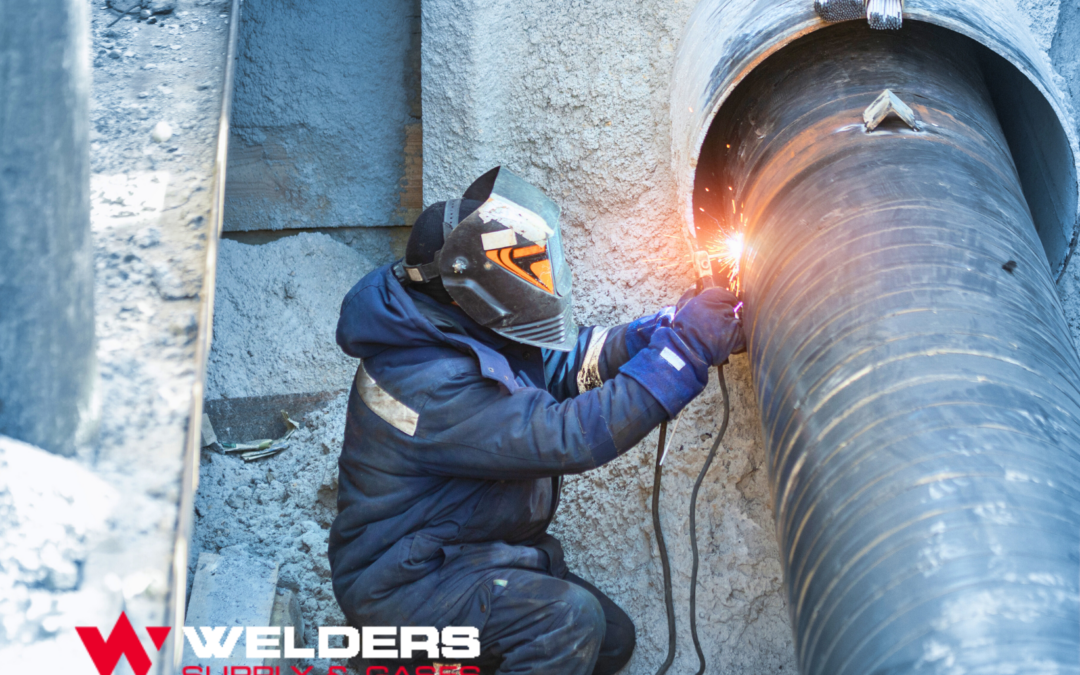Welding is one of the most essential trades in the industrial world, connecting metals to build tools, structures, and even transportation that shapes our societies. But where did it all begin? Let’s take a fascinating look at the history of the welding industry, which dates back thousands of years and has evolved into a sophisticated and vital skill in modern times.
Early Welding Techniques (3000 B.C. and Beyond)
The earliest evidence of welding can be traced back to ancient Egypt and the eastern Mediterranean around 3000 B.C. This was a time when basic metalworking laid the foundation for techniques that still resonate in today’s modern welding practices.
Forge Welding
One of the first welding methods was forge welding, where two pieces of heated metal were hammered together to join them into a single solid bond. Blacksmiths mastered this art over time, creating tools, weapons, and functional items crucial to their evolving societies.
The Bronze and Iron Ages
The Bronze and Iron Ages brought significant advancements in metallurgy. During the Bronze Age, people began to use bronze to create tools and artifacts, and by the Iron Age, they had shifted to forging iron and steel items. These were immense strides in technological capability that allowed stronger, more durable structures to be built.
Viking Blacksmiths
Moving into the medieval period, Viking blacksmiths further refined forge welding to construct robust weapons, armor, and other essential tools—most notably intricately forged swords and horse shoes. Their expertise in metalworking played a pivotal role in shaping their era’s technological prowess.
19th Century Advancements in Welding
While welding had been practiced for thousands of years, the Industrial Revolution of the 19th century brought groundbreaking technological advancements that forever changed the welding industry.
Discovery of Acetylene Gas
Acetylene gas, discovered by English chemist Edmund Davy in 1836, was a game-changer. This colorless gas, when combined with oxygen, produced an intense flame that became widely used for welding and cutting metals—a precursor to modern techniques like oxy-fuel welding.
The Electric Generator
With the invention of the electric generator in the mid-1800s, powered machinery became integral to creating more precise and efficient welding tools. This laid the groundwork for the emergence of modern welding equipment.
Introducing Arc Lighting
The development of arc lighting provided welders with a dependable method of creating sufficient heat to fuse metal. This advancement propelled the welding industry into a new era of innovation.
Resistance Welding
By the late 19th century, resistance welding emerged as a method to join metals by applying high pressure and passing electrical currents through the materials. This efficient and practical approach set the stage for automated welding techniques.
Welding Innovations in the 20th Century
The 20th century heralded even more monumental breakthroughs in the welding industry. Innovation moved at breakneck speed, with new methods making welding not just easier but more precise and versatile across countless applications.
Automatic Welding
Automatic welding was introduced in 1920, revolutionizing the industry. The continuous feeding of electrode wire meant welders could now achieve smoother, faster, and more consistent joins. This automation enabled welding to keep pace with the growing demands of manufacturing and construction.
Electron Beam Welding
By 1958, a groundbreaking method called electron beam welding was invented, allowing for deep and narrow welds with incredible precision. This process utilized a focused beam of high-velocity electrons, revolutionizing how tasks were completed in industries like aerospace and automotive manufacturing.
A Global Impact
These innovations transformed welding into a pillar of industrial development worldwide. From helping construct skyscrapers to building ships and assembling industrial machinery, welding became indispensable to modern engineering and infrastructure.
Welding Today
Fast forward to today, welding has solidified its place as a vital skill across industries such as:
- Automotive – From car frames to intricate engine components, welding helps assemble vehicles with precision and durability.
- Construction – Welding is used to create foundational structures, bridges, and other critical infrastructure.
- Shipbuilding – Essential for piecing together massive steel frames and hulls, welding ensures modern ships can withstand even the harshest conditions.
With the use of cutting-edge technologies such as robotic welding, laser welding, and augmented reality training tools, the welding industry continues to evolve, maintaining its relevance and importance.
Closing Thoughts
The history of welding is a testament to human innovation and ingenuity. What started with forge-wielding blacksmiths hammering heated metals has transformed into a highly technical and automated process that underpins modern infrastructure and industry. For welding enthusiasts, history buffs, and industrial professionals, understanding this evolution offers a deeper appreciation for the craft and its vital role in shaping the modern world.
What’s next for welding? Given its long-standing history of innovation, one thing is clear—this ancient technique will undoubtedly continue to spark advancements for generations to come.



